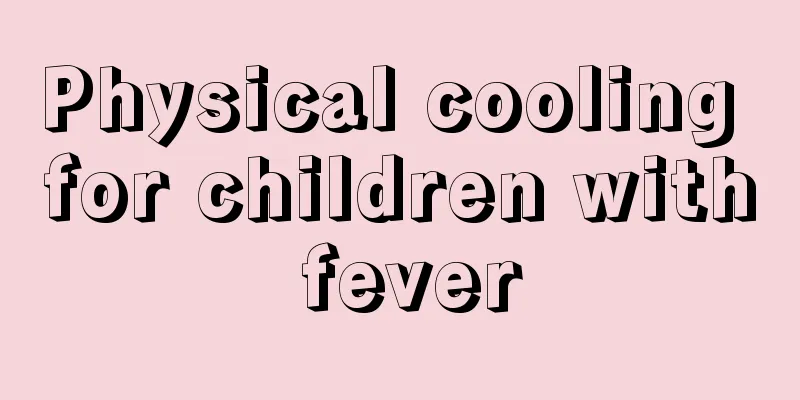What to do if your child chokes on water while swimming

|
Nowadays, many parents let their children learn to swim. Although the places where children swim are relatively safe and there are coaches to supervise them, accidents still happen sometimes. Generally speaking, if a child chokes on water while swimming, we need to deal with it in time to ensure the child's health. But many people don't have this knowledge. What should you do if your child chokes on water while swimming? What to do if your baby chokes on water while swimming
1. Pay attention to the qualifications of the swimming pool How can infants and young children swim safely and healthily? Generally speaking, in the infant swimming pool of a regular hospital, swimming supplies are "changed for each person" and "disinfected for each person". Swimming pools and shower pools are regularly and strictly disinfected, and a health check is required before swimming. However, these strict "health indicators" are difficult to achieve in some private swimming pools. In particular, most staff members of some swimming pools for infants and young children have not received formal training, and some swimming pool owners even open their businesses after only "observing" in a hospital, posing considerable health and safety risks. Swimming can indeed exercise the baby's body and increase lung capacity, but swimming is not a necessary exercise for every baby. If parents let their children swim at home, they must pay attention to three "hard indicators": bathtub hygiene, water temperature and adult supervision. If they choose a private swimming pool for infants and young children, they must pay attention to its qualifications and sanitary conditions, otherwise the baby may be cross-infected due to unsanitary conditions of the swimming pool. Although the country currently has no clear regulations on private infant swimming pools, parents are advised to pay attention to the swimming pool's qualifications, venue and swimming pool specifications, water temperature control, water quality monitoring, pool water replacement frequency and other conditions. Regarding the safety risks of swimming rings, in fact, the safety of neck rings has not yet been scientifically certified. Several well-known domestic doctors have questioned the safety of swimming with a neck ring and suggested that it may harm the baby's cervical spine. Therefore, parents should not use it frequently and should pay more attention to changes in children's facial expressions when swimming. 2. If you are suffocated by water, stand upside down immediately What temperature should the water be kept for infants and young children to swim? What should parents do if an accident occurs? The water temperature for infants to swim should be controlled within 39℃, and the swimming time should not be too long. Newborn babies only need to swim for 7 minutes for the first time, and then it can be extended to 15 to 20 minutes depending on the situation. The longest time should not exceed 30 minutes. Adults should always observe the child's expression to see if the child is tired or uncomfortable. If any situation is found, the child should be taken out in time. If the child looks distressed or has purple lips, first aid measures should be taken. Once a baby chokes on water, first aid should be given immediately in four steps: first, turn the child upside down, then pat the back, lay the child flat after the water comes out, and perform cardiopulmonary resuscitation. Parents should not reverse the operating procedures due to panic, otherwise it will make later rescue difficult. Baby swimming precautions
1. Umbilical cord waterproofing For newborns whose umbilical cord stump has not yet fallen off, the umbilical cord should be routinely waterproofed before the baby swims. The treatment method can be simple and economical, that is, covering the umbilical cord stump with ordinary 3L medical adhesive tape. But in principle, for newborns within 5 days of birth, the umbilical cord should be waterproofed before swimming. 2. Eat a healthy diet
Before breastfeeding, the baby's stomach is empty and the body is weak. Swimming consumes a lot of energy and can easily cause exhaustion. Therefore, do not train your baby to swim when he is very hungry. Swimming immediately after breastfeeding will cause insufficient blood supply to the stomach and internal organs, which is not conducive to the digestion of food and may even cause gastrointestinal discomfort, nausea and vomiting. Therefore, it is not suitable for babies to swim after they are full. It is best to wait half an hour after the baby is full. 3. Pay attention to heat preservation
Whether your baby is swimming at home or in a swimming pool, the water temperature should be kept constant as much as possible. In a swimming pool, you can choose a constant temperature pool, while at home you should pay attention to continuously injecting hot water into the gradually cooling water to achieve a constant temperature effect, or turn on the indoor heating. |
<<: What causes long-term sleep muscle spasms in children?
>>: Children's rubbed legs syndrome?
Recommend
What to do if you have a poor memory? Do this to improve your memory
If a child has a poor memory, he will also be poo...
Four-year-old baby's tongue coating is white
The tongue coating can be used to diagnose many d...
What is the common sense of caring for babies in the first three months?
The baby is relatively fragile in the first three...
What should I do if my child has crooked teeth?
No matter what stage a child is in, parents will ...
Will a newborn baby have diarrhea if he changes his milk powder?
For mothers, the most important issue is whether ...
What is the cause of a child's heart murmur? Parents must read this
Many children will have their heart checked when ...
Why does my baby have tears and mucus?
We parents have all experienced this situation, t...
Baby beef dumplings
Those who have babies at home know that you can’t...
What causes acne on newborn babies' faces?
Newborn babies are very fragile and deserve our p...
At what age does the baby's resistance become strong?
When parents are taking care of their babies, man...
My nine-month-old baby can't crawl
Everyone should be familiar with this. For exampl...
What to do if your child has glomerulonephritis
What to do if children have glomerulonephritis? T...
What to do if your child has a hunchback?
We all say that knowledge changes destiny, and bo...
What are the common skin diseases in children?
Children have a relatively weak constitution, esp...
How to better treat bronchial asthma in children?
If a child suffers from pediatric bronchial asthm...









